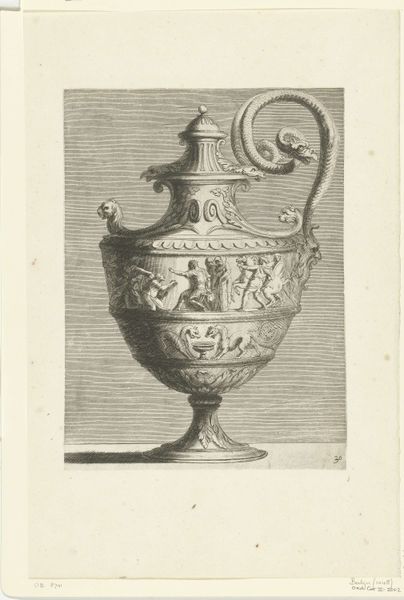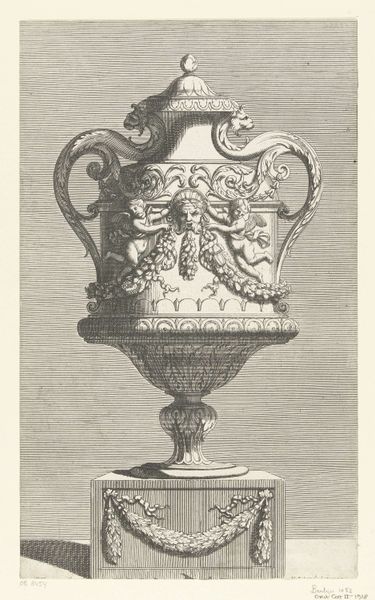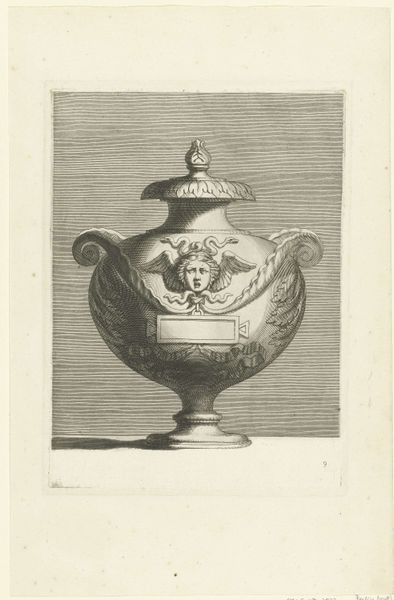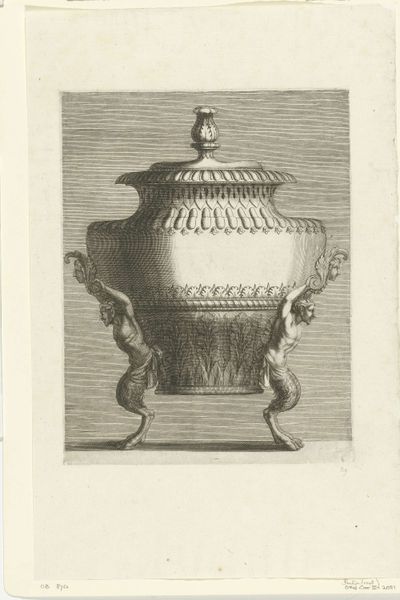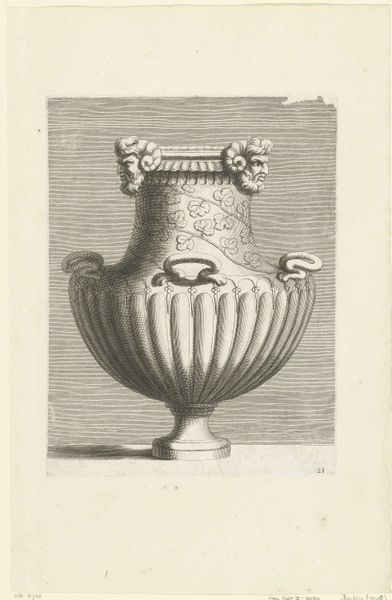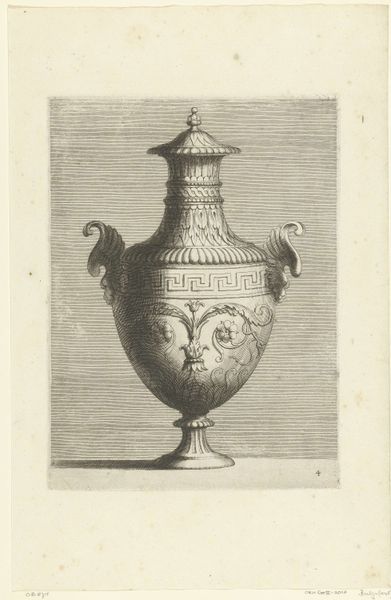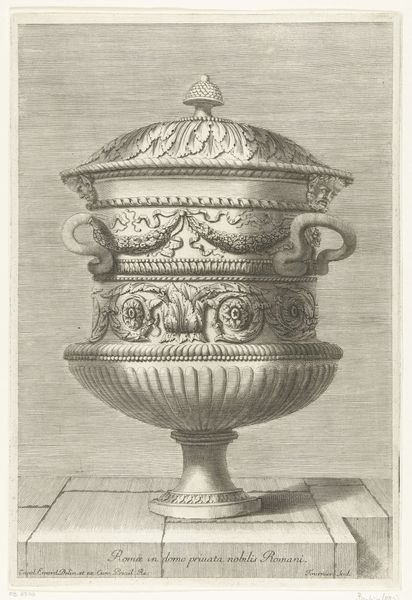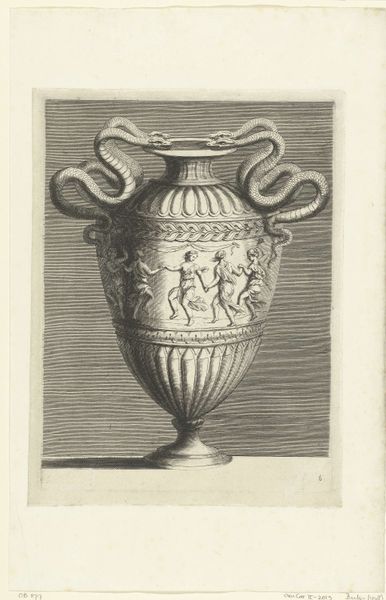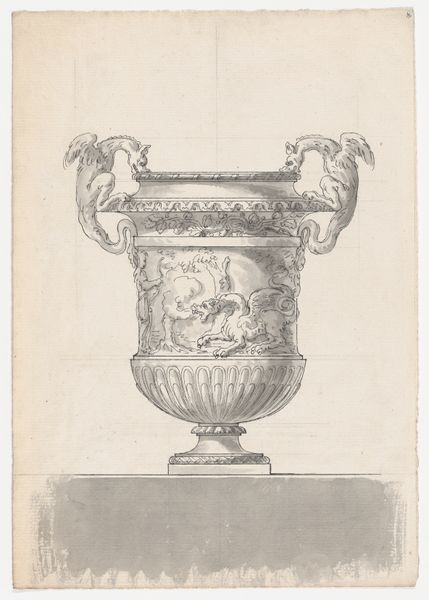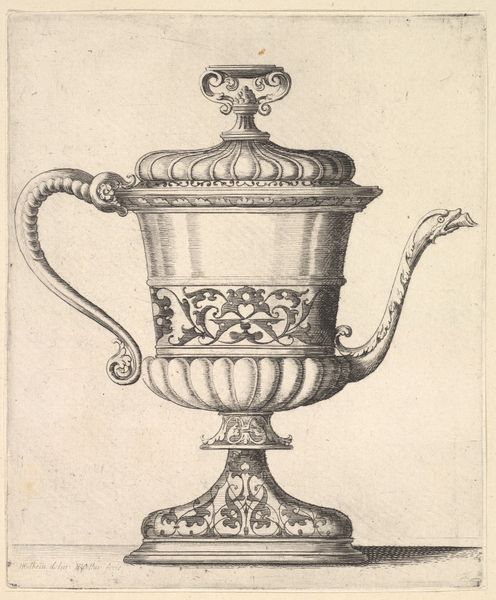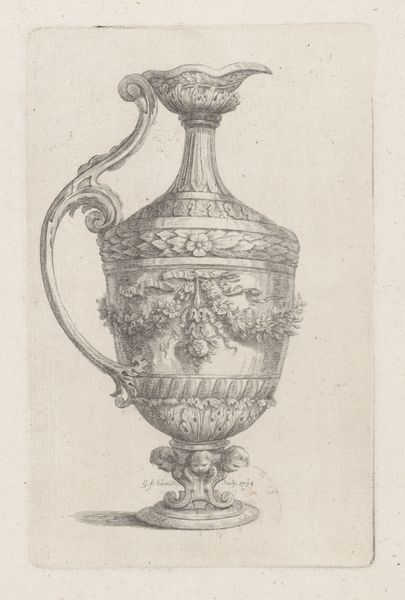
print, metal, engraving
#
baroque
# print
#
metal
#
old engraving style
#
figuration
#
form
#
line
#
engraving
Dimensions: height 271 mm, width 203 mm
Copyright: Rijks Museum: Open Domain
This covered vase was made by Françoise Bouzonnet in the 17th century, and it’s an etching – meaning that the design was first bitten into a metal plate with acid, and then printed onto paper. Look closely at the image: you’ll see a vase festooned with ornament, including human figures acting as handles. What is the cumulative effect of all this detail? Well, this is not only a drawing of a vase; it is also a representation of skilled labour. Printmaking was a laborious process, involving many different hands, and that level of effort is on full display here. Etchings like this were often made to be collected in pattern books, functioning like an encyclopedia of possible designs. Artisans would then take inspiration from these prints, incorporating motifs into their own work. So, the next time you see an ornamental vase, or indeed any kind of decorated object, remember that it’s not just about the aesthetics. It’s about the labour and the social context that made it possible. Far from being a rarefied exercise, the graphic arts provided an essential service to a whole world of makers.
Comments
No comments
Be the first to comment and join the conversation on the ultimate creative platform.
